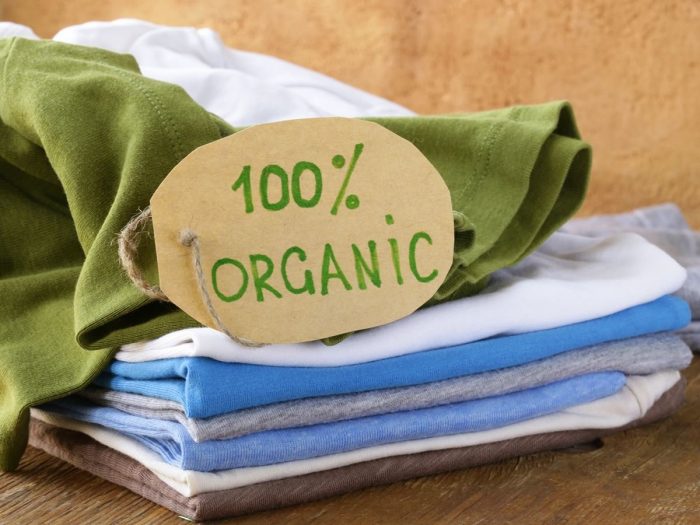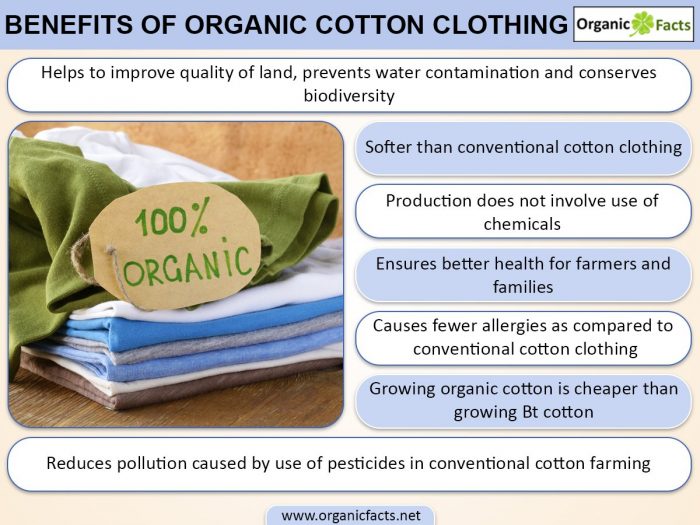Some of the benefits of organic cotton clothing include better health for consumers and farmers, environmental conservation, and cost savings for farmers. These benefits have created a boom in the organic cotton clothing industry in the past few years. Parents are increasingly purchasing organic cotton baby clothes, diapers, and baby blankets.
Both young and old consumers, and men as well as women, are switching to various products made from organic cotton such as jeans, pajamas, shirts, t-shirts, towels, bedding, mattresses, pillows, blankets, sheets, duvet covers, socks, bath robes, underwear, bras, bags, and other clothes made of organic cotton fabric and yarn.
The benefits of organic cotton clothing include the following:
Benefits for Consumer
Manufacturers of organic clothing strongly advertise that organic cotton clothing is better to wear, especially for babies. Many consumers and parents also agree with this. Organic cotton is excellent for the tender, developing skin of a baby. It is believed that organic cotton clothing is softer than conventional cotton clothing.

Demand for organic clothes is on the rise as people become more environment-conscious. Photo Credit: Shutterstock
Furthermore, since the production of organic cotton does not involve the use of chemicals, it causes fewer allergies. Organic cotton apparel also reduces respiratory problems and smells pleasant. Please note that these benefits of organic cotton are perceived beliefs, and do not have strong scientific proof to back them up. Organic Facts is a strong proponent of organic food and organic living; however, it is necessary to provide the right kind of information to the readers. Please read about the benefits of organic food for more details.
Environmental Benefits
You might be surprised to know that conventional cotton accounts for nearly 25% of the insecticides and 10% of the pesticides used throughout the world, although is it grown on only 3% of the total cultivated area. Cotton crops have been plagued by numerous diseases and pests over the years, including bacterial blight, ascochvta blight, southern blight, lef spot, bollworm, white fly, crown gall, lint degradation, anthracnose, areolate mildew, powdery mildew, black root rot, boll rot, sting nematode, charcoal rot, escobilla, stem canker, leaf spot, lint contamination, terminal stunt, cotton rust, southwestern cotton rust, tropical cotton rust, verticillium wilt, reniform nematode, abutilon mosaic, anthocyanosis, blue disease, small leaf, leaf crumple, leaf curl, leaf mottle, leaf roll, psylosis, and phyllody. It also ranks fourth in the list of most heavily fertilized crops.
The excessive use of chemicals in conventional cotton production has led to a great deal of environmental pollution. Organic cotton is grown using organic means without the use of chemical fertilizers, pesticides, and insecticides, therefore helping to improve the quality of the land, prevent water contamination, and conserve biodiversity. [1]
Improved Health for Farmers
Like conventional coffee production, conventional cotton production also leads to poisoning, causing various health problems for cotton farmers. The problem of poisoning due to chemical insecticides and pesticides is so acute that thousands of poor farmers in developing countries end up losing their lives. Organic cotton production, on the other hand, ensures a healthy life for the farmers and their families.
Cost Savings for Farmers
Studies carried out by the Centre for Sustainable Agriculture in Andhra Pradesh, India have shown that growing organic cotton is cheaper than growing Bt Cotton, since Bt Cotton is more prone to pest attacks.

Organic clothing is from materials raised in or grown in compliance with organic agricultural standards. Photo Credit: Shutterstock
Prevention of Suicides
Many times, failed crops in chemical cotton production results in farmers falling into extreme debts, since the input costs are so high. In the past few years, numerous farmers in India, especially in the states of Maharashtra and Andhra Pradesh, have resorted to suicide when the problem became too serious. The input costs for organic cotton production reduce over time, enabling farmers to remain debt-free even after a crop failure, thereby preventing anyone from resorting to drastic measures.
